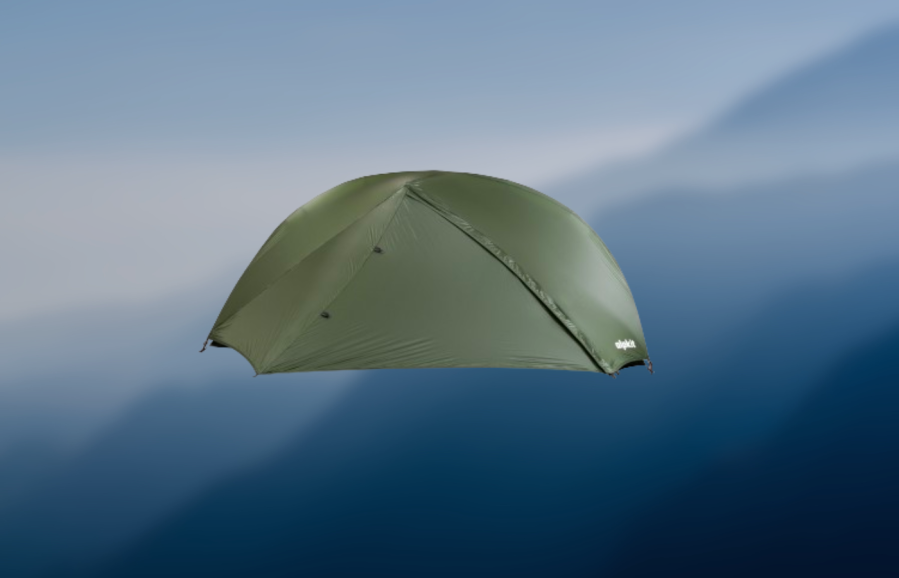The Alpkit Ultra is a new, semi freestanding one person tent, pitching inner first with the fly suspended over a single carbon fiber pole ‘spider’ structure. There are 4 corner pegging points and 3 additional pegging points, creating an offset porch, plus a smaller storage space at the rear of the tent. There are no guy lines and no attachment points for any.
David Lintern’s Verdict
It’s a convenient weight and packsize for running or bikepacking adventures at lower elevations in decent weather, but I’d have reservations about using this over multiple nights.- Lightweight
- Small footprint
- Decent sized porch
- No headroom
- Poor pole moulding on sample
- Poor wind resistance
| Quick specs | |
|---|---|
| Price: £299.99 Weight: 943g Pitching: inner first, semi freestanding Flysheet: 10D Nylon coated ripstop nylon with PU backer, double sil coating quoted as 100% waterproof Inner: mesh Groundsheet: 15D ripstop nylon PU, 5,000 hydrostatic head. Optional Footprint (+£19.99, 125g) also 5,000 hydrostatic head Poles: 1x Y shaped Carbon fiber Pegs: 7x 4” titanium Y pegs Porches: 1 Inner Dimensions: length 200cm, height 75cm, width 75cm alpkit.com |
The inner is mesh with a sown in groundsheet, a single pocket, and a hang loop. The groundsheet seems durable, although the brand offers an additional footprint at extra weight and cost for a little more security. There’s a single vent at the rear, and I experienced no condensation. The mesh means it’s a cooler shelter to sleep in.
Even at a diminutive 5’8, I found the Alpkit Ultra cramped. The inner is long and wide enough to sleep in comfortably, but the useable headroom was a good 12-15cm short of that quoted, which meant sitting up without touching the roof or the sides was impractical, as was cooking, getting changed and getting in and out of the shelter. The porch is of a decent size for storage, but the roof does slope, and the zip is 1 way only, so cooking in the rain is tricky.
I had other reservations. The shelter may be low to the ground, but no guy lines still means the tent is suspectable to cross winds. The carbon fiber pole flexes easily. My prototype unit also had a defective section with a poor tip/sleeve mould. I was able to field repair this with an aluminium sleeve in the supplied repair kit. The brand say they have addressed the issue on the main production run.
It’s a convenient weight and packsize for running or bikepacking adventures at lower elevations in decent weather, but I’d have reservations about using this over multiple nights, especially in the mountains, where I’d prefer something with more living space.






